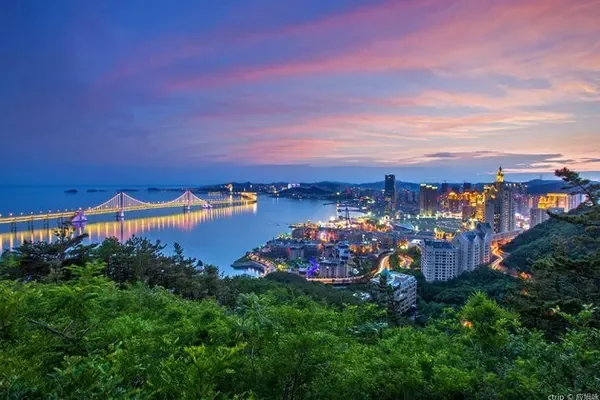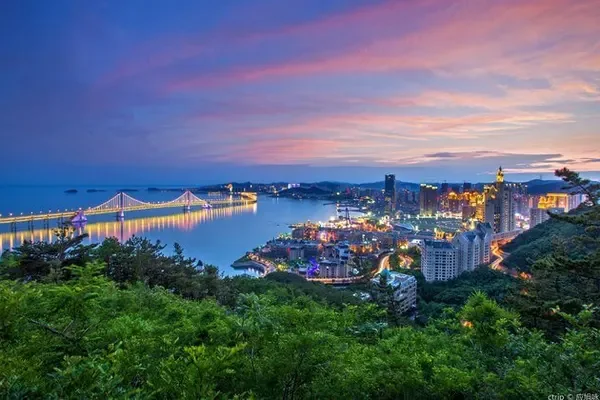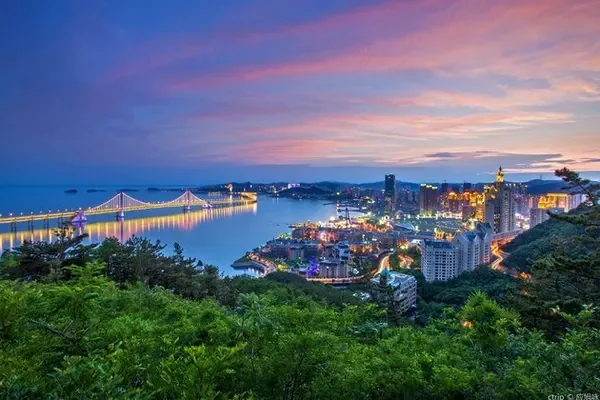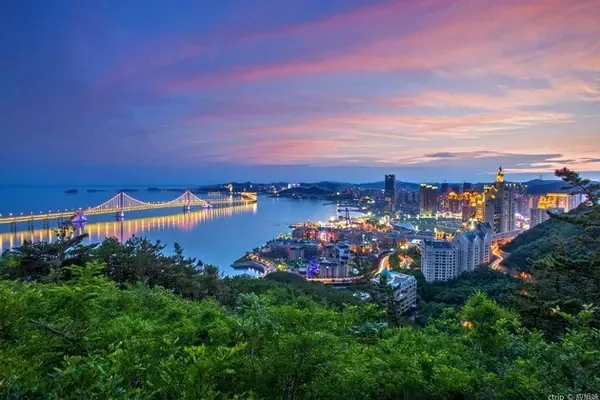
The flowers in spring do not bloom in the golden season, the red leaves in the mountains cannot be blown by the wind in summer, and the snow in winter can only taste its branches and pavilions. This is the inherent charm of autumn. And we always choose to go close to the mountains and rivers when the golden autumn comes, hoping that these picturesque natural beauty scrolls can bring a trace of our own tranquility and spiritual cleansing to the noisy life.


In a corner of the north of Beijing, a thousand-year-old temple, the reputation of Hongluo Temple has been resounding for thousands of years in the northern land. Timeless and beautiful, Hongluo Temple is located at the southern foot of Hongluo Mountain, 5 kilometers north of Huairou District, Beijing. It has a long history and a brand-new decoration. Hongluo Temple was built in the fourth year of Xiankang in the Eastern Jin Dynasty (AD 338), with a history of nearly 1700 years. Originally named "Daming Temple", it was renamed "Huguo Zifu Temple" during the Zhengtong period of the Ming Dynasty. Later, it was commonly known as "Hongluo Temple" because of the wonderful legend of the Hongluo Fairy.



Every autumn, the autumn scenery in the suburbs of Beijing always attracts people's attention. When you come to Hongluo Temple, which is built on the mountain, you can see its rigorous layout, magnificent momentum, rows of ancient buildings, and trees and flowers. At this time, the charm of autumn is elegant, the sky is as blue as washing, the back is against Hongluo Mountain, and the south is illuminated by Hongluo Lake. The beautiful picture scroll shows the beauty of ancient Chinese architecture.

As soon as you enter Hongluo Temple, you will see the Chongpai Gaofang, surrounded by jade railings, colorful chisel heads, green pine eaves, exquisitely chiseled, and the inscription "Jingbei Giant Temple". When approaching the mountain gate for the first time, regardless of the rain and snow in the four seasons, you can appreciate one of the "three superb views of Hongluo", the Royal Bamboo Forest with a history of more than 600 years. When the breeze blows, surrounded by green bamboos, the greenery is about to drip, the rustling sound is intoxicating, and the posture is whirling, making people love and love. This bamboo forest was originally planted by Zen master Yunshan in the Yuan Dynasty. Emperor Kangxi came to Hongluo Temple to offer incense, and found it by accident. He praised the green bamboos and told monks and local officials to protect them. Since then, people have called this bamboo forest. The piece of bamboo forest is called "Royal Bamboo Forest".


Walking through the quiet path, suddenly a bright light came, the breeze passed through the forest with magpies chirping, the mountain spring water flowed down from the valley and gathered in the small lake in front of you, and a pair of fairies stood gracefully in it. The two red snails are particularly eye-catching. The name of "Hongluo Temple" comes from a beautiful legend. According to legend, the two princesses of the Jade Emperor felt that the life in Tiangong was too cold and lonely, so they went down to earth together. They came to a big mountain, where the mountains and rivers depend on each other, the ancient trees are towering, and there is an antique temple hidden in the greenery. From time to time in the elegant and solemn monastery, the sound of the wooden fish, as well as the sound of reciting scriptures, can be heard. This is not a fairyland but it is better than a fairyland, which deeply moved the two princesses. The idea of the two princesses living here for a long time came naturally. They turned into a pair of big red snails, living in the lake in front of the temple. During the day, they turned into human bodies to worship the Buddha and chant scriptures with the monks in the temple; at night, the two princesses turned into red conch shells and emitted thousands of red lights, illuminating the temple and the foot of the mountain red. They also use their divine power to secretly protect temples and local people. Since then, the weather here has been smooth, the forests are luxuriant and the food is abundant. The people are all grateful for the kindness of Fairy Hongluo. In the Yuan Dynasty, the Jade Emperor recalled them to the Heavenly Palace. In order to commemorate the two Hongluo fairies and hope that one day the fairies will return to this place, people call the mountain on the north of the temple Hongluo Mountain, the lake on the south of the temple is called Hongluo Lake, and the temple is also called "Hongluo Temple". "Are.




The architectural structure of Hongluo Temple is quite classic, and the architectural form is also unique to the north. Surrounded by mountains and rivers, Hongluo Temple is divided into five courtyards, including the middle courtyard, the east courtyard, the west courtyard, the east lower ridge, and the west tower courtyard. 244 rooms. The middle courtyard takes the Mountain Gate, the Hall of Heavenly Kings, the Hall of Great Heroes, and the Hall of the Three Saints as the axis, and there are four side halls in the east and west; The east courtyard is the reception area; the west courtyard is the Abbot’s Retired House and the Shifang Hall; the north of the East Lower Kan is the Old Monk’s Retired House and the Yanchou Hall, the south is the practice field; the West Upper Kan is the snail pagoda.

Approaching Hongluo Temple, you can see the words "Huguo Zifu Zen Temple" in front of the mountain gate. The two majestic stone lions in front of the gate are accompanied by faint bells when you enter the temple. In front of the Daxiong Palace, two tall ancient ginkgo trees stand against each other, like a couple raising eyebrows, so some people call them "husband and wife trees". Over the past hundred years, these two trees have gone through changing seasons, wind, frost, rain and snow, and they are still tall and straight, with dense branches and leaves.



Among them, the slightly larger male tree has yellow flowers and branches every spring, but no fruit in autumn; the slightly smaller female tree has no flowers in spring, but is full of fruits in autumn, which is really strange. And autumn is the most beautiful season of ginkgo. The sound of Sanskrit surrounds the beams, the autumn wind is gentle, and the golden ginkgo leaves shine brightly in the sun. This is also the most attractive place to come to appreciate. When you come to the courtyard in front of the Sansheng Temple, you can see the wisteria pine in the "Three Wonderful Views of Hongluo". I saw the vines curling up, and the pine vines have also merged into one. The vines, like a giant python coiled up from a low place, wandered around the branches. Quite a historical style.


Going up the steps along the Guanyin Road, this hiking trail restored on the site of the ancient road in the Liao Dynasty is the most convenient way to the Guanyin Temple in Hongluo Mountain, and it is also a hiking trail integrating blessing, health preservation, fitness and sightseeing. On both sides of the "Guanyin Road", there are 33 vivid, serene and dignified white marble statues of Avalokitesvara, which can fully experience Buddhist culture during the process of climbing high and viewing the scenery.




Located in the oak forest at an altitude of 360 meters on the front slope of Hongluo Temple, Guanyin Temple was first built in the Jin Dynasty. The abbot of Hongluo Temple, Zen Master Yunshan in Yuan Dynasty, once lived in seclusion and practiced here. The original Guanyin Temple was destroyed in the early years. In 1997, Guanyin Temple was rebuilt on the original site. Avalokitesvara Temple sits north and faces south, with Shanmen Hall, Songzi Avalokitesvara Hall and Huicheng Hall triple hall, divided into upper and lower courtyards, connected by 108 steps in the middle.


Although Hongluo Temple is a good place for hiking, it can’t avoid some tourists who have limited mobility or don’t want to climb the mountain. Just like going to Guanyin Temple, it’s better to take the slide to go up and down the mountain. The whole journey is 2.3 kilometers, and the uplink is 800 meters Pulled by cables and escorted by staff, you can not only enjoy a leisurely journey, but also experience the "thrilling" slide "downhill".


It doesn't matter whether you climb up or dive down, every plant and tree in Hongluo Mountain seems to contain rich philosophy of life. Rather than coming here to escape the summer and enjoy the autumn, it is better to say that you come here to express your feelings through the scenery and have an epiphany about life. People often say that if you want to purify your soul, you must go to the Qinghai-Tibet Plateau, but that is not necessarily the case. I have experienced a lot in the Hongluo Mountains and Rivers.





In the slightly bleak golden autumn, I seemed to melt into Hongluo Mountain in a trance, and became one with it, letting the refreshingness of this fairy called Tianran wipe away the heat and heat accumulated in the whole summer time and time again. With anxious mood. Let the sound of the clear stream pass through your ears, washing away the prosperity that has been deposited for a long time and refuses to peel off. Looking up at the Wanli Biqing dotted with silk fluttering, what is surging with the wind is the imagination of the whole autumn in my mind. Strolling forward, the promenade on the mountain is faint, compared with the mountain and the sky, it is a small scene, which shows how small the individual is.


Looking far away, you can have a panoramic view of the beautiful scenery of Huairou. Hongluo Lake, Yanxi Lake, and Huairou Reservoir are dotted among the golden forests and mountains full of red leaves. The sky is blue and the leaves are ruddy. Walking in the Hongluo Mountain, listening to the indistinct bells, watching cigarettes rise, watching the red leaves all over the mountain, and enjoying the infinite beauty of golden autumn.

Hongluo Mountain has its majestic style and simple character. Hongluo Mountain is full of pride and beauty. Hongluo Mountain is meandering, flat, colorful, beautiful, gentle and roaring. Looking at the mountain scenery, ten steps, it is continuous, and a hundred steps, thousands of rivers and mountains, this is a mountain that is born in a unique corner of the north of Beijing.



